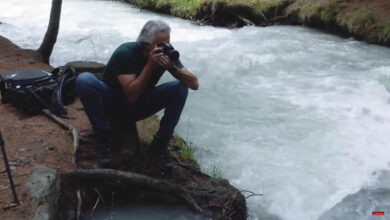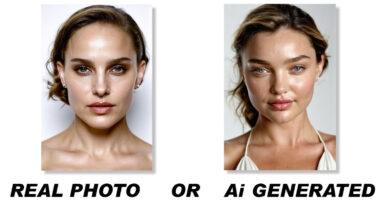What Happened to Photo Credits?

Back in my college days, when I first started taking photographs, I pursued magazine photography because I loved seeing my name printed in the magazine. Often, I wasn’t being paid for my services and the photo credit was payment enough for me. When I incorporated my business some 20+ years ago, I named my company “photo: John Ricard, LLC” because it resembled a photo credit.
Over the years, I understood that it was important that I be paid for my services and that having my name appear in a magazine wasn’t sufficient compensation for the art I was providing to a magazine. These days, I am paid for the use of my photographs. But despite the passing of decades, I have never lost the love of seeing my name listed in print next to one of my photographs.
For a working professional, having your name shown in a magazine or on a website alongside your work is more than just a guilty pleasure. If you work in a specific genre where the audience may see your name repeatedly over the course of a year, it can lead to paid jobs from those people. If there is a popular photographer in your area who is more known than you for covering events, the photo credit can help ensure that people don’t assume your photos were taken by that other photographer. Photographers want to be recognized for their work, and some take to watermarking their images. Many shooters like myself, however, feel these watermarks detract from the final image, and we refuse to use them on our work. Depending on how an image is being used, the photographer may not have the option of adding a watermark. But the fact that so many photographers do choose to watermark their images shows that the desire to be credited for your work is as valid a concern for photographers today as it was when I began shooting in the early 90s.
Unfortunately, there seems to be a movement among certain media outlets to not credit photographers when their images are published. I spoke to wildlife photographer Daniel J Cox to get the perspective of another working, professional photographer on this matter.
The trend for magazines to not give photographers their photo credits is something Dan has been outspoken about for over a decade.
I was looking through Digital Camera World magazine recently and saw an interesting photograph of a lightning storm. I was wondering who took the photograph because I wanted to see more of the photographer’s work. When I checked the credit, it credited only to Getty Images. It’s ironic that the magazine’s website states, ‘The Digital Camera World team is made up of professional journalists, lifelong camera enthusiasts, and former and current professional photographers. It sounds trite, but DCW is written by photographers for photographers…’ It’s a disconnect when a magazine dedicated to educating its readers about photography doesn’t give the photographers credit who are supplying their images. I checked other articles on their website; many have the photographer’s credit done properly. I suppose they may try to get it right and sometimes fail. But whatever their policy, they need to get it right all the time.
This article is not meant to condemn any one publication or outlet. DCW is only mentioned here because the image in question was so striking that one can’t help but feel the photographer was wronged by not having their name accompany that image. It is a shame the creator of the image wasn’t given credit. The situation with omitted photo credits is especially objectionable when the writer of an accompanying article is prominently credited. Text and images are of equal importance in storytelling, and there is no logical reason to acknowledge one creator by name rather than crediting both artists.
Dan’s work was licensed by Getty Images for over two decades, and he has worked with a variety of magazines, book publishers, calendar companies, card companies, and poster publishers during that time as well. He remembers when stock photos syndicated by an agency sold for an average of $250-$400. “I never got rich, but I paid for my photo shoots to places like Africa, Antarctica, Alaska, and other exotic locations. I also paid for my college, health insurance, a house payment, a truck payment, and put some aside for retirement. All things any normal person trying to make an actual living is required to do.”
Today, the rate for stock photos is as low as a single dollar. One platform, Unsplash, has allowed the use of user-submitted photographs at no charge. An individual, or even a corporation like Microsoft, Apple, Adobe, or Tesla could download and use images in a commercial campaign at no cost. Decades ago, these same images might have been licensed for $40,000-$80,000. If there is any benefit to the photographer for this type of usage, surely it pales in comparison to the benefits of receiving a large sum of money from a company using the photographer’s images.
Being credited for the use of an image is in no way compensation for the use of an image commercially or even editorially. Still, when images are being licensed for low amounts of money, or being given away for free, it is understandable that photographers are offended by statements such as this one on the Unsplash website: “No permission needed (to use the photograph in any way) though attribution is appreciated!”
It bears repeating that this article isn’t suggesting that a small photo credit on a website or in the spine of a magazine is sufficient compensation for the use of an image. For many years, however, it was understood that a photo credit served as a form of advertising for photographers. Whether the photographer was a staffer or freelancer, the small acknowledgment of the photographer’s work was always appreciated and beneficial to the photographer’s career.
Dan is fortunate to have been in the business long enough to have established himself. He still makes a living traveling and taking photographs for a variety of clients. He offers the following advice for newer photographers:
If you have the experience of not being credited for your work, you need to speak up. What do you have to lose? With such paltry sales in stock and editorial photography, one way that you are rewarded is to get a proper credit line. This is part of your brand building, and it may help you leverage your work in ways you would never have thought possible. It did for me, and it can still do the same for you.




